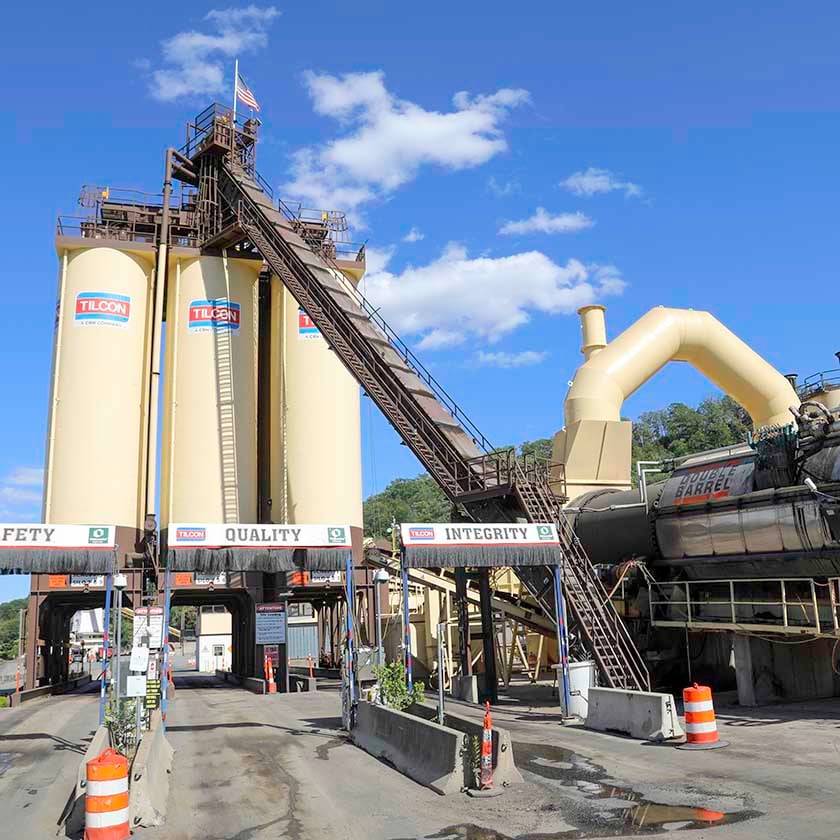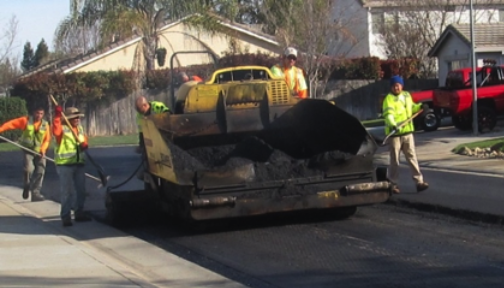Opening the Keys of Warm Mix Asphalt Modern Technology
Checking out the depths of hot mix asphalt technology discovers a world where careful processes and exact formulas converge to shape our roads and facilities. The fusion of binders, fillers, and accumulations isn't merely a building and construction job but a strategic orchestration of longevity and efficiency. As we peer right into the complex dancing of components, a tapestry of strength and sustainability unravels. What exists below this surface area of asphaltic mastery, and what keys wait to be introduced in the world of leading innovations?
Relevance of Hot Mix Asphalt
Hot Mix Asphalt plays an essential duty in contemporary framework development due to its longevity and cost-effectiveness. As the most generally made use of paving product for roads, freeways, and car parking lots, Warm Mix Asphalt uses a range of advantages that add to its significance in building jobs.
The durability of Hot Mix Asphalt stems from its make-up, that includes accumulations, binder, and filler materials that are carefully chosen and mixed to satisfy details performance demands. This precise mix leads to a versatile and solid sidewalk that can sustain frequent usage without substantial wear and tear. Warm Mix Asphalt is 100% recyclable, further boosting its sustainability and environmental benefits. Overall, the relevance of Warm Mix Asphalt in infrastructure advancement can not be downplayed, as it remains to be a cornerstone of modern-day building and construction practices.
Components of Asphalt Mixes
The structure of asphalt blends includes thoroughly chosen aggregates, binder, and filler products that are crucial for accomplishing specific efficiency needs. Aggregates are the key element of asphalt blends, giving toughness and security. These accumulations can be all-natural, such as gravel or smashed rock, or artificial, like recycled materials from old sidewalks. The binder, commonly bitumen or asphalt cement, holds the accumulations together and offers versatility and toughness to the mix. The option of the binder is vital as it directly influences the mix's efficiency in various climate condition. Fillers, such as moisturized lime or Rose city cement, are made use of to enhance the mix's workability and aging resistance. Angled Parking.
The combination and percentage of these elements play a significant role in figuring out the high quality and performance of the asphalt mix. Designers thoroughly develop the mix to fulfill certain demands, thinking about aspects like web traffic volume, climate conditions, and pavement life-span. Correct choice and harmonizing of accumulations, binder, and fillers are essential for developing durable, durable asphalt pavements.
Mixing and Production Techniques

Once the aggregates are chosen, the binder, frequently asphalt cement, is included to bind the materials together. The binder's top quality and quantity dramatically affect the mix's resistance, stamina, and versatility to environmental elements. In addition, fillers like moisturized lime or Portland cement might be included to enhance details attributes of the asphalt mix, such as its workability or dampness resistance.
Throughout production, the aggregates and binder are heated up, usually between 250-325 ° F(121-163 ° C ), to facilitate mixing and make certain proper covering of the aggregates. The blending process must be complete to attain an uniform combination that promotes the desired performance attributes of the asphalt. Various strategies, such as batch blending or drum mixing, are utilized to achieve consistent and high-quality asphalt mixes for building projects.
Elements Influencing Asphalt Efficiency
Elements influencing asphalt efficiency encompass a range of variables that influence the sturdiness, durability, and general top quality of asphalt sidewalks. One vital factor is the high quality of materials utilized in the asphalt mix.

Ecological conditions likewise influence asphalt efficiency. Temperature variations, moisture infiltration, and web traffic loads can all affect the structural honesty of the pavement. Design considerations, such as sidewalk thickness and drain, are necessary in guaranteeing the long-lasting efficiency of the asphalt pavement. By very carefully taking into consideration these specialists, variables and designers can enhance asphalt efficiency and boost the life span of pavements.
Sustainable Practices in Asphalt Innovation

Furthermore, the advancement of warm-mix asphalt (WMA) innovations has actually obtained grip in recent times. WMA enables the production and placement of asphalt blends at lower temperatures compared to typical hot-mix asphalt, resulting in decreased power usage and greenhouse gas emissions. In addition, making use of porous asphalt mixes can help alleviate stormwater overflow issues by allowing water to infiltrate via the pavement and right into the ground, promoting all-natural water filtering and reenergize processes. By implementing these lasting practices, the asphalt market can contribute to constructing a much more resilient and ecologically friendly framework network.
Final Thought
In conclusion, hot mix asphalt modern technology plays an essential duty in modern-day framework development due to its sturdiness and cost-effectiveness. By meticulously balancing parts, employing proper blending methods, and thinking about various factors, designers can produce high-quality asphalt blends that withstand heavy website traffic tons and rough climate condition. Embracing sustainable practices, such as using warm-mix technologies and recycled products, further boosts the ecological friendliness of asphalt technology.
Mixing and production techniques in warm mix asphalt innovation include the precise mix and handling of aggregates, binder, and fillers to produce a durable and high-performance asphalt hot mix asphalt mix.Factors affecting asphalt performance incorporate a range of variables that impact the durability, longevity, and total quality of asphalt pavements. Lasting techniques in asphalt technology encompass different efforts intended at decreasing the ecological effect of asphalt production and paving processes. By incorporating reclaimed asphalt sidewalk (RAP) and recycled asphalt shingles (RAS) into new asphalt blends, the industry can substantially minimize the intake of raw products and energy, while also decreasing landfill waste.
WMA permits for the manufacturing and placement of asphalt blends at lower temperature levels compared to standard hot-mix asphalt, resulting in reduced power usage and greenhouse gas exhausts.